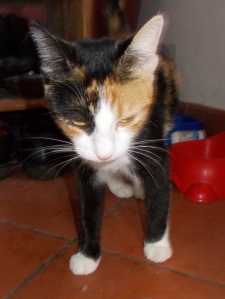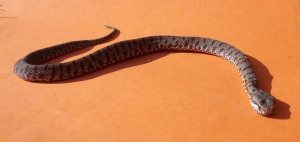Italy is crumbling. I am not referring to the political situation which is still obsessed by that arch-crumbly B himself but to the geo-climatological picture. The cyclone which has hit Sardinia, in in its own way as devastating as that which recently massacred the Philippines, is yet another bomba d’acqua or “water –bomb” flagellating this martyred country. No year passes here now without a major hydrological disaster. 82% of all the land surface of this beautiful country is presently at risk.
Just take the last four years.
2010
A river of mud in September devastated the town of Ravello, on the Amalfi Coast. The streets were completely flooded with water and sludge. One loss of life. In October, Prato was hit by a powerful wave of bad weather. Over 100 mm of rain fell in a few hours. Three Chinese women died after their van got stuck in an underpass. In Veneto, just a month later, a flood caused more than a billion Euros damage, with about 140 square kilometres of land flooded and three deaths.
2011
In March Puglia and Basilicata, were flooded by rivers like the Bradano and Agri causing economic losses of more than 80 million Euros with further damage in Taranto and Foggia and hundreds of hectares of agricultural land and roads under water. A father and daughter were drowned in their car. In November Genoa and its province had 400 mm of water fall in a few hours. The death- toll was six. (Genoa is now apparently the Italian city most at risk from future water bombs). A few weeks later, heavy rains and violent storms swept through the province of Messina with three dead and hundreds made homeless.
2012
This time it was the turn of our nearby province of Massa and Carrara, where 200 mm of rainfall fell in two hours, and that lovely stretch of coastline, Le Cinque Terre. No dead fortunately this time but many landslides, blackouts, whole areas buried under a metre of water for days and over 13 million euros in damage just to business. There was a further flood in the Maremma in November with six dead in all and nearly 700 displaced.
2013
Poor Sardinia! Six months’ worth of rain fell in less than six hours… A national emergency has been declared. What a different picture now from the land we visited to attend a relative’s wedding in 2009. We still don’t know how many dead there are but thousands of people are now homeless and the government is contributing an initial tranche of 20 million euros in emergency aid. It’s still raining there as I write (and here too!)
I have not even begun to describe the horrors of the many earthquakes Italy has suffered in the past few years: notably L’Aquila and the Modenese! (See also my post at https://longoio.wordpress.com/2013/06/24/i-feel-the-earth-move-under-my-feet/)
And as for the economic situation, with one of the highest percentages of young people in Europe still without any chance of a job and small and large businesses folding up everywhere (largely because of that infamous word – outsourcing)…
The last things this tormented country needs are a crumbling government, administrative corruption advancing to equatorial African proportions, organized international criminality, an under-funded educational system and a lack of resources to protect the urban and rural landscape from future (and apparently even more frequent and disastrous) water-bombs.
Italy is a geologically young and very fragile country. Anyone who lives here must know that – we have all been personally affected or, if we have been lucky, we know friends who have been less so…
In addition, three catastrophic factors will cause even more harm to this beautiful part of the world:
- Climate change. Cyclones are caused when cold air meets warm air. With the warm air becoming ever warmer…
- Countryside drainage neglect. Because of rural abandonment large areas of this country no longer have that intensive loving care to the land that their forefathers lavished . Drainage channels are clogged, houses are built on flood-plains…
- Cementificazione (Cementification). Every year an area in Italy the size of the commune of Rome is put under cement with insufficient planning control and often quite illegally.
One of the tests of knowing whether you’re still in the right place after eight years is to ask yourself “Do I still follow English news?”
I’ve largely stopped doing that eons ago. It’s what’s happening here that concerns me most now. Any ex-pat who is still switched onto Sky Sport all the time and doesn’t watch and follow Italian news and current affairs programmes (largely because they still haven’t bothered to become fluent in the language) is living literally in cloud-cuckoo land.
I know I still love this country and will have its name engraved on my heart à la Browning because, despite reading the regional papers during my orzato lungo macchiato at my bar in the morning, and despite following the most disturbing reports, investigations and debates on Italian television I shall want to be here since Italy offers in compensation much more than the water-bombs, the earthquakes, the corrupt political scene and the economic mess can try to take away from it.
I know this intimately and crossing the Ponte a Moriano bridge yesterday morning I felt and saw it with my own eyes:
My heart leaps up when I behold
A rainbow in the sky:
So was it when my life began;
So is it now I am a man;
So be it when I shall grow old,
Or let me die!









